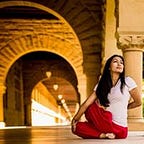February [21st | Ekushe | একুশে]
A Photo Essay
These photos were taken on the eve of International Language Day, 2015.
The blog is in a separate post.
The Parade
The parade starts from multiple entrances of the Dhaka University
We started from the Palashi entrance. One of the groups here is my college, BUET and on the other side of those sculptures behind the trees is my school, Udayan. Udayan is a university high school.
The Memorial
The ‘Shohid Minar’. The memorial for the martyrs of that day. This itself has a long history of being torn down and erected again.
Walk around the campus and another Memorial
Tareque Masud was the most brilliant indie filmmaker of Bangladesh. He died in a tragic road accident in 2011. The remains of their vehicle was the memorial. Like many countries road accidents are a major cause of death. Unlike, many though, traffic laws are practiced very loosely, hit-and-runs are the norm. Though there is no legal way to consume alcohol.
BUET — The Engineering College
Bangla Academy.
Bangla Academy. This has been the venue for the book fair since 1972. This is a wall of quotes on the 21st February.
